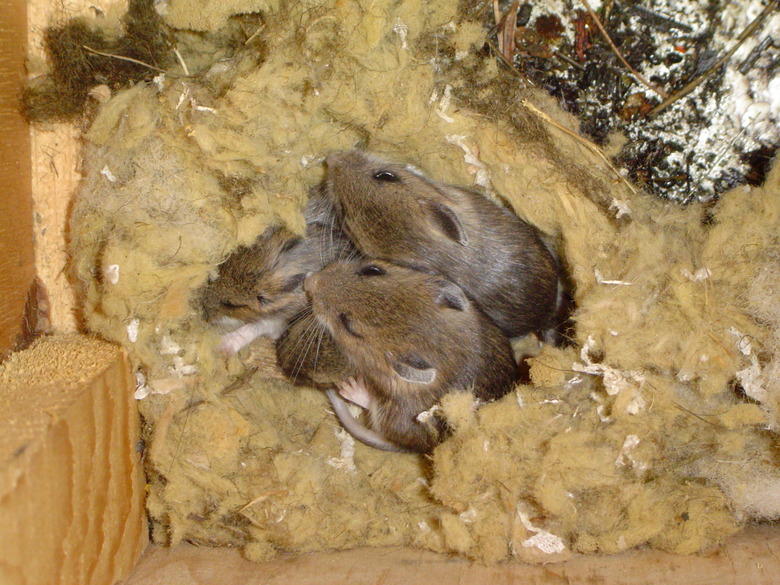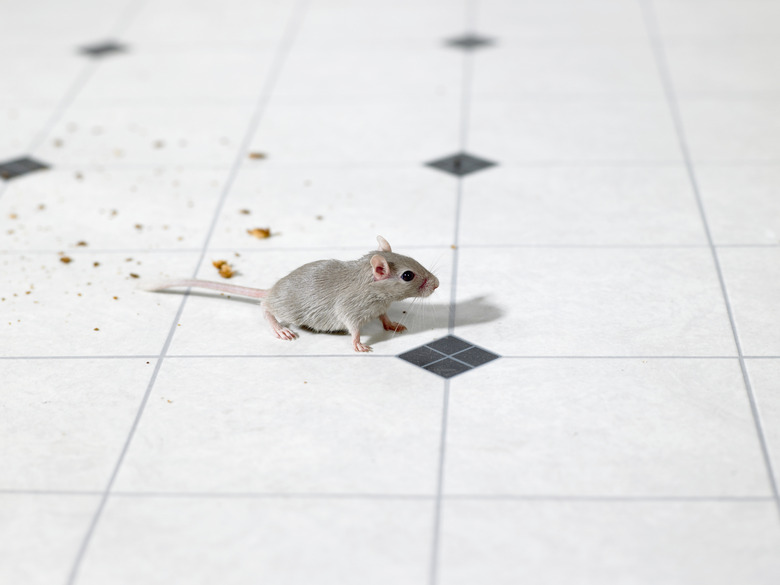How To Identify Rodents By Their Droppings
Mice and rats are the most common rodents found in the home. The telltale signs that you are sharing your living quarters with a rodent, or litter of rodents, include nests, which are often located in warm areas; gnaw marks; tracks; holes and marks on food packages; and droppings — typically the most prolific sign. While you are unlikely to spot the culprits directly due to the fact that mice and rats are generally nocturnal, an easy way to discover the type of rodents in your home is by identifying their droppings.
Step 1
Examine the rodent droppings you have discovered. Mice, as the smallest rodent, leave behind many tiny droppings that are rod-shaped and roughly the size of a grain of rice. The ends of mouse droppings are also pointed. The droppings are typically found in areas where food is stored, such as cabinets, drawers, cupboards and pantries.
Step 2
Use plastic gloves to crush a piece of dropping. Mouse droppings are often confused with those left by bats. An easy way to tell the difference: Bat droppings can be crushed into small, dry pieces, but mouse droppings cannot.
Step 3
Identify rat droppings in a similar fashion. Roof rats are larger than mice and leave larger droppings, which are roughly a quarter inch long and shaped like spindles. These droppings are also pointed at each end. Norway rats are larger than roof rats and leave droppings that are a quarter to a half inch long and that are shiny, black and crescent shaped.
Step 4
Distinguish raccoon droppings by size and location. While not technically a rodent, raccoons have the tendency to invade the home similarly to the way that mice and rats do — in warm, secluded areas such as attics. Unlike mice and rats, raccoons choose one particular spot as their toilet. Raccoon droppings are roughly two or three inches long and look similar to those left by a dog.
TL;DR (Too Long; Didn't Read)
Reduce the likelihood of rodent infestations in your home by not leaving any sources of food out overnight. If you find that you have mice or rats in your home, you can track where they travel with a dusting of a powder such as cornstarch on the floor. To help get rid of an infestation, follow the three R's: remove the reason the rodents are attracted, eliminate their route into your home and, finally, remove them via trapping or an exterminator.
Warning
Always use rubber gloves when cleaning up rodent droppings, as they can spread a variety of diseases. Wash your hands thoroughly after cleaning up any rodent-related mess.
Cite This Article
MLA
, Chelsea Oliver. "How To Identify Rodents By Their Droppings" sciencing.com, https://www.sciencing.com/how-to-identify-rodents-by-their-droppings-12449608/. 21 July 2017.
APA
, Chelsea Oliver. (2017, July 21). How To Identify Rodents By Their Droppings. sciencing.com. Retrieved from https://www.sciencing.com/how-to-identify-rodents-by-their-droppings-12449608/
Chicago
, Chelsea Oliver. How To Identify Rodents By Their Droppings last modified March 24, 2022. https://www.sciencing.com/how-to-identify-rodents-by-their-droppings-12449608/

